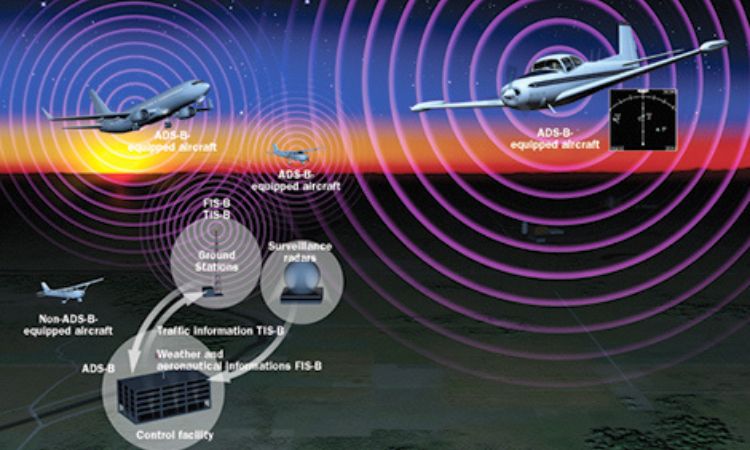Automatic Dependent Surveillance-Broadcast (ADS-B) Market outlook
According to the report by Expert Market Research (EMR), the global automatic dependent surveillance-broadcast (ADS-B) market size reached a value of USD 640.6 million in 2023. Aided by increasing demand for enhanced air traffic management and the growing applications of ADS-B in various sectors, the market is projected to further grow at a CAGR of 15.1% between 2024 and 2032 to reach a value of USD 1439.6 million by 2032.
Automatic Dependent Surveillance-Broadcast (ADS-B) is a surveillance technology for tracking aircraft, used by air traffic control and other entities. ADS-B is a key component of the modern air traffic management (ATM) systems, providing accurate aircraft position information, improving situational awareness, and enhancing the efficiency and safety of air travel. The market for ADS-B is driven by the increasing air traffic, regulatory mandates, and the need for more efficient and safer air traffic management systems.
The continuous rise in global air traffic, driven by economic growth and increasing connectivity, is significantly boosting the demand for advanced air traffic management systems. ADS-B technology, with its ability to provide precise and real-time aircraft position information, plays a crucial role in managing increased air traffic efficiently and safely.
Governments and aviation authorities worldwide are mandating the implementation of ADS-B technology to enhance aviation safety and efficiency. Regulations such as the Federal Aviation Administration (FAA) mandate for ADS-B Out equipage in the United States and similar requirements by the European Union Aviation Safety Agency (EASA) drive the automatic dependent surveillance-broadcast (ADS-B) market growth.
ADS-B technology offers significant improvements in air traffic management, including increased situational awareness, reduced separation minima, and enhanced surveillance in remote and oceanic areas. These benefits drive the adoption of ADS-B systems by air navigation service providers (ANSPs) and airlines.
Continuous advancements in ADS-B technology, including the development of space-based ADS-B and integration with other surveillance systems, enhance the capabilities and applications of ADS-B. Innovations in data processing, communication, and surveillance technologies contribute to market growth.
Compared to traditional radar-based surveillance systems, ADS-B offers a cost-effective solution for air traffic management. The lower installation and maintenance costs of ADS-B systems drive their adoption, particularly in regions with limited infrastructure, consequently driving up the automatic dependent surveillance-broadcast (ADS-B) market share.
The commercial aviation sector is the largest consumer of ADS-B technology, driven by the need for enhanced air traffic management and compliance with regulatory mandates. Airlines and ANSPs are adopting ADS-B to improve safety, efficiency, and situational awareness in busy airspaces.
The general aviation sector, including private and business aircraft, is increasingly adopting ADS-B technology for improved flight safety and operational efficiency. The availability of affordable ADS-B solutions and regulatory requirements drive market growth in this segment.
Military aviation applications of ADS-B include improved situational awareness, enhanced surveillance, and efficient coordination of military operations. The integration of ADS-B technology in military aircraft and unmanned aerial systems (UAS) supports market growth.
Get a Free Sample Report with Table of Contents
The growing use of UAS, including drones and remotely piloted aircraft, is driving the demand for ADS-B technology. ADS-B provides critical surveillance and tracking capabilities for UAS, supporting their safe integration into controlled airspace.
As per the automatic dependent surveillance-broadcast (ADS-B) market analysis, North America, including the United States and Canada, is a significant market for ADS-B due to high air traffic, strong regulatory frameworks, and the presence of major aviation market players. The region’s emphasis on advanced air traffic management and safety supports market growth.
Europe, with its robust aviation sector and stringent regulatory mandates, represents a significant market for ADS-B. Countries such as the United Kingdom, Germany, and France are key contributors to market growth, driven by high demand for advanced surveillance and communication systems.
Automatic Dependent Surveillance-Broadcast (ADS-B) Market Segmentation
The market can be divided based on type, application, fit, component, platform, and region
Market Breakup by Type
- On-Board
- Ground Stations
Market Breakup by Application
- Terminal Manoeuvring Area (TMA) Surveillance
- Airborne Surveillance
Market Breakup by Fit
- Line Fit
- Retrofit
Market Breakup by Component
- Transponder
- Receiver
- Antenna
Market Breakup by Platform
- Fixed Wing
- Rotary Wing
Material Breakup by Region
- North America
- Latin America
- Asia Pacific
- Europe
- Middle East and Africa
Competitive landscape
The EMR report looks into the market shares, plant turnarounds, capacities, investments, and mergers and acquisitions, among other major developments, of the leading companies operating in the retail market. Some of the major players explored in the report by expert market research are as follows:
- Honeywell International, Inc.
- L-3 Technologies, Inc.
- Indra Sistemas, S.A
- Garmin Ltd.
- Collins Aerospace Inc
- Aireon LLC
- Others









